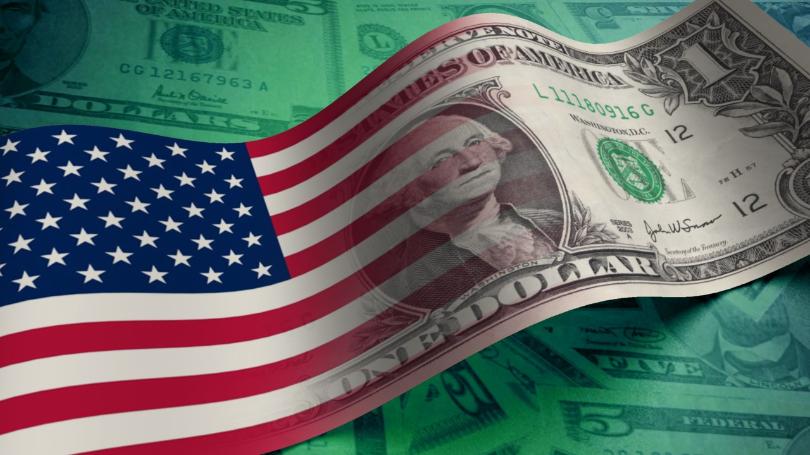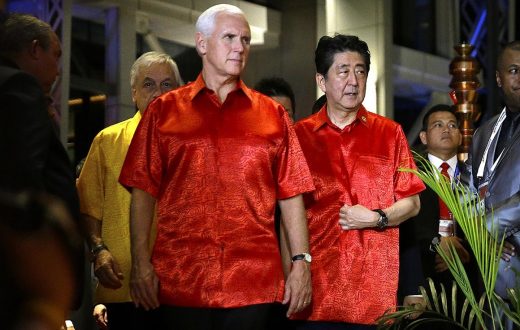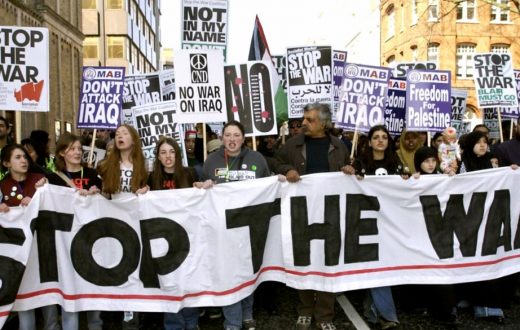The United States is in need of economic recovery. Many parts of the country has been in decline since after the Second World War. Sove have even been in Simple solutions like tax breaks and urban enterprise zones simply will not cut it anymore. There needs to be a fundamental change from the ground up.
Many other countries are already doing something transformational to their economies. China is launching the Belt and Road Initiative. India is doing the Made in India Initiative and the Act East Policy. If the United States doesn’t do something similar, the United States will lag behind.
What makes it more complicated is that because the United States is so big and vast, with its population not evenly distributed, and encompassing a wide variety of different terrains, means that a one-size fits all approach to economic recovery simply will not work.
But, there are some universal policies that can be implemented.
The first policy is to strengthen the social welfare. One cannot recover quickly from economic recovery without a strong social welfare net. Lawmakers can do this by implementing universal health care, as that has been proven to help in the spawning of new businesses.
The second policy would be on the promotion of local business through small banks, particularly in rural areas. If there are no small, local banks, there cannot be small, local business. The United States needs to support more local banks, more Henry F. Potters, and George Bailey’s, if you will.
The third policy is to address debt. Debt has an effect to hinder economic growth. As John Adams said “There are two ways to enslave a nation: One is by sword, the other is by debt.” Most causes of debt are concerning medical costs and education costs, as well as predatory loans from businesses engaged in predatory lending, like the funeral industry and credit card industry. One way to address this to to implement universal healthcare, tuition free colleges, and cracking down on predatory lending.
The fourth policy concerns wages. Jobs mean nothing without wages. People must be paid good wages. One can accomplish this by enacting policies that raise wages.
The fifth policy concerns labor unions. History has shown that the stronger the labor unions, the stronger the middle class. In order to achieve a strong economy, one must invest heavily in strengthening labor unions. Such ways to do so include striking down right to work laws.
The sixth policy concerns competition. Healthy economic output and productive economy cannot happen without the ensuring the establishment of healthy competition. This was realized in the economic policies of Ludwig Erhard, established in West Germany at the conclusion of the Second World War. Ludwig Erhard enacted an economic philosophy known as ordoliberalism, where government would act as a referee in a game of free-market competitions to ensure that everyone is following the rules and that the game is fair. Laws to enact-that include anti-monopoly laws, and trust-busting laws.
The seventh and final universal policy concerns urban planning. It has been proven that cities with a strong urban core have more prosperous economies than cities without one. Policies to improve cities include getting rid of mandatory parking laws, abolish zoning laws, and investing in public transportation by building more rapid transit lines (subways, elevated lines, light rail, etc.) and replacing buses with streetcar trolleys.
Now, onto the different regions. Including the Overseas territories, you can divide the United States into six regions: Northeast, Midwest, South, West, Caribbean, and Polynesia.
NORTHEAST
The Northeastern United States consists of Virginia, District of Columbia, Maryland, Delaware, New Jersey, New York, Connecticut, Rhode Island, Massachusetts, Rhode Island, and Maine. This region has historically attracted immigrants from around the world for its abundance of ports, banks, and textile mills, notably Irish, Germans, Italians, Jews, and Slavs, among others.
The politics of the region are progressive on social policy, progressive on public policy, and centrist on fiscal policy; pro-gay businessmen, so to speak. The elections are dominated by the more left-wing metropolitan cities over the conservative rural areas, as the overwhelming majority of the population in the Northeastern United States lives in metropolitan cities.
The region has never been a strong center of heavy industry, although Baltimore and Wilmington did have a massive steel base. New Jersey, a historic center of innovation, was also a center of industry, notably centered in six cities: Newark, Paterson, Elizabeth, Jersey City, Trenton, and Camden. New England, as well as Orange, NJ, was also a center of textile manufacturing until the 1920s, when they left to find cheaper markets in the Southern United States. Holyoke, MA, was known as “Paper City” due to its abundance of paper mills, until they left to find cheaper markets as well.
So what is the solution? Technology. Upstate New York is already doing this by transforming into a hub for nanotechnology, Albany in particular. Other industries that the Northeastern United States could transform into include nanotech manufacturing, artificial intelligence, virtual reality, aerospace, and 3D-printing. 3D-printing could also herald in a new era of manufacturing, with the manufacturing of things such as artificial organs, low-cost houses, and new building and be clothing fabric, the latter in particular fundamentally transforming how we impact with our environment.
Another thing to do is vertical farming. As more people live in cities, vertical farming will provide an abundance of food year-round. This could be done in old textile mill buildings.
There are measures that policymakers can do to insure this. The first is by creating policies that promote and incentivize the formation of startups. Rather than attracting businesses that already exists, a sign in a robust economy should rather be the rise of new businesses. Policies include the promotion of local banks (which I mentioned earlier) as well as tax incentives.
MIDWEST
The Midwestern United States consists of Pennsylvania, West Virginia, Kentucky, Missouri, Iowa, Minnesota, Wisconsin, Illinois, Indiana, Ohio, and Michigan. The region is known for being a bastion of heavy industry, due to its abundance of natural resources, and it’s flat terrain making it perfect for transportation. While this area was once a strong, economic powerhouse, the area has been on a steady decline since after the Second World War.
The politics of the region is centrist on social policy, progressive on public policy, and progressive on fiscal policy, with the population evenly distributed across the region. Union membership is high here, with pro-union sentiments very strong.
Now, before one must discuss the future of heavy manufacturing, one must discuss the history of industrialization in general.
At the turn of the 20th Century, there were only four industrialized nations on Earth: Germany, Belgium, Britain, and the United States. In the time between World War One and World War Two, Russia, Ukraine, and Japan also industrialized. But, as a result of the Second World War, the other industrialized nations were reduced to rubble. This meant that the United States enjoyed a period of prosperity as there was no competition in the world that could touch them.
But this was not meant to last. Eventually the destroyed countries rebuilt, and by the 1970s, there were new industrialized nations; China, South Korea, France, Italy, Luxembourg, Canada, and Sweden. Eventually Mexico and Israel also industrialized. In the future, new industrialized nations to compete with the United States include India, Pakistan, Vietnam, Brazil, Nigeria, Ghana, Ivory Coast, and Kazakhstan. The United States will now figure out how to compete against at least 22 other nations on the global market.
There is something about the history of industry in the United States that also needs to be addressed. It is only natural that as industry grows, people demand more in wages and benefits, and the cost of manufacturing increases. The reason why people see manufacturing as a means to jumpstart economic growth is because it is, well, just that. One cannot understand economies unless one thinks of them like children; eventually, they grow up.
But there is one country that has bucked this trend: Germany. Despite high labor costs and strong union membership, manufacturing in Germany has remained strong since the Great Recession with hardly any manufacturing jobs in Germany being outsourced to China and other low-cost developing nations. If the United States is to rebuild and revitalize its manufacturing base in order to compete on the world stage, the United States must copy the German manufacturing model.
Now, many economists argue that the German manufacturing model, or Middlestadt, is built on foundations that may be tied to the German culture, and thus very difficult to replicate elsewhere, in spite of the fact that the Midwest is predominately of German heritage, as it was settled by German immigrants, and many elements of traditional German culture still remain in the Midwest. But, there are some things that can be replicated in the United States.
The first is that German manufacturing companies specialize operating in a specific-niche market of high end products where quality is more important than quantity. While American manufacturing companies manufacture products for customers, German manufacturing companies manufacture products for clients. Such examples include the manufacturing of tunnel boring machines, machines that cut metal for the production of Iphones, toilets, windows, etc.
The Second is that Germany has a strong apprentice program that makes it have an abundance of skilled workers, and thus a very favorable place for manufacturing companies to set up shop, whereas many manufacturing companies have reported on a serious lack of skilled labor in the United States, and thus American factories have no choice but to automate in order to compete.
This brings up a serious topic, automation, that has to be addressed before we go any further.
Many people have said that to combat automation there needs to be implemented a universal basic income. Finland has experimented with Universal Basic income, the results have so far appeared to have been good. But we are not yet at full automation yet, and thus do not know if the same results will be upheld if full automation is implemented.
There is also a second factor to automation that also needs to be discussed.
All-human factories are inefficient, as people require break and medical expenses. But all
-robot factories have their problems as well. They are expensive to maintain, but more importantly, they are big, bulky, and dangerous pieces of equipment. The fact that they build giant gates to segregate them from humans in order to prevent injury also lessens efficiency.
In response to these two different scenarios, many manufacturing companies have tried a third option: cobots. Cobots are robots designed to work with humans. Ford has installed them at their plants in Cologne, the end result has been proven to be that a human-robot hybrid plants have had higher productivity than either both all human or all robot plants, and have had to hire more people as a result.
One also needs to look at automation through a pragmatic perspective. While one can theoretically automate a bartender, the likelihood of bartenders being automated is extremely unlikely. This is for the same reason that companies prefer assembly lines; there are some thing that are run more efficiently by humans, and there are some things that are run more efficiently by robots.
A second thing concerning the pragmatic outlook on automation is that people need to be trained for skills of the future. This is where the United States government steps in. The government can set up vocational schools evenly distributed across the entirety of the country.
Aside from manufacturing, there are two other industries that were dominant in the Midwestern United States, coal mining and steel making. While these seem like two different industries, with a different past, they may share a common future together.
Coal mining was active in Pennsylvania, West Virginia, and Kentucky. The industry declined due to automation, health hazards, environmental hazards, and the rise of renewable energy and natural gas. Steel making was active in Pennsylvania and Ohio, and declined due to, among other things, lack of modernization.
This brings up a fundamental problem with US policy. Because the infrastructure of the United States was not destroyed during the Second World War, there was little incentivization to modernize. This ultimately came back to haunt the United States, as the countries that did modernize ended up outperforming the United States. Such ways that they modernized include recycling old steel through minimills, as well as continuous casting.
But there is a future industry that has remain untapped that will revolutionize the future, and fundamentally transform the American Midwest: Graphene.
There has been a very important question about the usage of coal no one seems to be asking: Is there uses for coal other than as a fossil fuel? Indeed, there is. Coal is carbon, the main ingredient for graphene. The uses for graphene are enormous: Biorobotics, superconductors that can charge electronics in seconds, light processing, a source of energy, water filtrator, medical sensors, building lubricant, waterproof coating, ultra-tall skyscrapers, etc.
Another means of acquiring coal is carbon capture technology. This could bring a whole new future for small coal mining towns, as they become epicenters in the fight against climate change. Not only that, but, as it does not appear that the fight against climate change will ever fully end completely, these small towns could remain stable for several generations.
This could also bring a new wave of technological innovation to the American Midwest and even give silicon valley a run for its money. Old steel mills can be converted into graphene production centers. Unfortunately, we don’t yet know how to produce graphene on an industrial scale.
THE SOUTH
The Southern United States consists of Louisiana, Arkansas, Tennessee, North Carolina, South Carolina, Georgia, Florida, Alabama, and Mississippi. The land is known for its rural towns, rich food, rich music, and massive poverty. The politics of the region is centrist on public policy, conservative on social policy, and conservative on fiscal policy, with the church very strong, although this is slowly changing.
The South was once very wealthy, with much of the wealth deriving from slave-based labor in cotton fields. But since the abolishment of slavery following the end of the American Civil War, the south has been in a continuous state of poverty. People there had been working as sharecroppers, and then mechanization meant the end of that profession. Today, most people just live off of small farms.
Now, one cannot continue to discuss economics of the South, or any particular region, without discussing geography. For the destiny of a country cannot be determined without its geography. The reason the Northeast is more commercial and the reason the Midwest is more industrial is due to geography.
For the Southern United States, the geography has its limitations. The geography of the South means that it is good for agricultural, but is not good for heavy industry. This is due to a multitude of reasons. One, there are little to no industrial resources in the South. There is only one industrial city in the South: Birmingham, Alabama, which wasn’t even around at the time of the American Civil War. Southern cities are great centers of logistics, but not much else. As a result, there has been little incentive for Southern to move into the cities to find work.
The Second reason is that there is a reason the Midwest is good for industry. The terrain is flat and good for transportation, while the South is very mountainous, with thick forests make it hard to grow industry. What makes it more difficult for the terrain of the South is that the soil is great for cash crops, but poor for other types of agriculture.
But there is a cash crop that can help the South move into the modern age. Hemp.
Hemp’s many uses include fuel, fiber, building material, bioplastics, paper, jewelry, rope, and biofuels. This would bring a new wave of industry, as the South becomes a new hub for medical and other companies.
Now, the ultimate question remains: How do we protect these types of industrial jobs from outsourcing and sent off to low-cost developing countries? Well, the simple answer is to create an economic zone that makes American low-cost manufacturing, like hemp manufacturing, primarily center its products on American markets before exporting its products to foreign markets, rather than just prioritizing mass producing all across the globe wherever those markets may be.
THE WEST
The Western United States comprises the states of Texas, Oklahoma, Kansas, Nebraska, South Dakota, North Dakota, New Mexico, Colorado, Wyoming, Montana, Arizona, Nevada, Utah, Idaho, California, Oregon, Washington, and Alaska. The West is known for three things: Agriculture, energy, and abundance of mineral resources like gold and silver, as well as the promotion of science and technology. Let us break down each individual things one at a time.
First, agriculture. The United States has the greatest potential for agriculture out of any country, due to its vast abundance of rivers and fertile soil. But, even so, the United States could try to maximize its agricultural output. There are a few ways the United States could do it. First, the United State could invest in high-tech agriculture, meaning products like drones, automated tractors, and satellite farming. Second, American Universities could be created to help people learn modern farming techniques and collaborate with tech firms to integrate new high tech farming methods into American farms. Third, the United States government could create regional information centers for farmers to be updated to the latest in farming technology to make farms more productive and more energy and resource efficient.
Second, energy. The Western United States is rich in oil reserves, particularly in Texas, Oklahoma, North Dakota, Montana, and Alaska. Now, oil cannot last forever. Eventually, it will run out, and the United States will have to search its energy for other means. And that means going to renewable energy. Fortunately, the United States has the greatest potential for renewable energy out of any nation on earth. States such as Arizona, Utah, New Mexico, Nevada, Texas, and California could be home to large arrays of solar panels. Texas, Oklahoma, Wyoming, and Idaho have strong potential for wind power. Many other Western States, such as Alaska, have strong potential for geothermal energy.
This brings up the topic of climate change. The United States must make a large portion of its economy into fighting climate change, as it seems like it will be a concern for all future time. Such ways it could do that include carbon capture being installed at all of its power plants, as well as replacing oil refineries with algae refineries. Algae biofuels hold enormous potential as a source of energy, as they can do all the functions oil-based gasoline can do, and soak up carbon dioxide from the atmosphere in the process.
Third, mineral resources. The West was driven by its vast reserves of gold and silver. However, this came to an end as a result of the Great Panic of 1893, when the value of gold and silver, the base of US currency at the time, and key to American industries in the East, rapidly plummeted as the industrial bubble burst.
Besides currency value, there is one other prominent uses for gold and silver: Computer circuitry. Idaho has already taken advantage of this, and become a technology hub. Other Western states can do this by having circuitry companies build electronic factories in the manufacturing of computer circuits.
Aside from these three things, the Western United States is also investing in the future of aerospace; Kansas, Colorado, and New Mexico in particular. The United States government can further increase this and become the leader in space by partnering with private companies to further develop this industry. The ultimate way, though, for the development of space to take off, is if space, and the exploration of space, is commercialized.
There is one main industry that has not yet been put into the mainstream: Mining for resources in space. Though the technology to make this is still far from mainstream, Luxembourg has already invested considerably into this industry. When this industry becomes more developed, space will be more commercialized. The United States government must support the development of this technology.
THE CARIBBEAN
The Caribbean consists of Puerto Rico and the United States Virgin Islands. Since these are not states, but rather overseas territories, implementing these efforts will prove to be more difficult than in the previous regions listed.
There are many other setbacks that hinder economic development for the region. The terrain is not very well-suited for farming. The region has no raw materials to extract. This makes it so that the region has to import the overwhelming majority of its products from elsewhere. Plus, the region has a brain drain problem, with people who grew up there leaving the region to move to Miami and New York the first chance they get.
The geography of the region, though, has a great deal of potential. Puerto Rico and the United States Virgin Islands sit at the center of major shipping routes, as cargo going through the Panama Canal on it’s way to ports in the Eastern United States and Western Europe pass through. If the economy is to grow, it must capitalize on this.
Fortunately (or unfortunately, depending on how you look at it) the complete devastation inflicted on the region caused by both Hurricane Irma and Hurricane Maria give us the opportunity to start from scratch and build something new in place of the old.
And what is this new? One word: Singapore.
Singapore is a major economic hub, in large part because the policies of former leader Lee Kuan Yew capitalized on the fact that it sits next to a major shipping artery. The success of Singapore has caught the eye of other countries who wish to replicate their success, notably Rwanda. To rebuild and revitalize, the Caribbean U.S territories must look to Singapore. This would fix the problem of a brain drain, as many who left to go to the main United States will return, and since these are full-American citizens, thereby speeding up the process of Puerto Rico becoming a state.
This brings up two topics that need to be addressed: Immigration and gentrification.
The issue of gentrification has to concern mainly with the issue of white flight. After WWII, many whites began moving to the new suburbs, and, in doing so, took their money with them. This caused the value of whole neighborhoods to plummet, and new black communities began to move in to them. However, they were unable to compensate for the money lost in white flight, due to a number of reasons, notably zoning laws that favored wealthy communities over poorer ones. But now, white flight is being reversed. The descendants of those who went to the suburbs are now moving back into the cities. In doing so, the value of neighborhoods are going up and money is being poured back in. Hence, neighborhoods are being gentrified.
But rather than appealing to the working-class families who moved into the suburbs and now wish to move back in, many developers build housing to the upper middle class, and, as a result, entire neighborhoods of cities are too expensive. This also has a significant impact on traditionally minority communities who are then forced out by more white, upper middle class residents.
Now, there are many reasons for gentrification happening. The main reason being not enough housing. Some reasons for this policy include zoning restrictions on housing development, forcing many developers to make housing more expensive. Again, one can look to Singapore for answers, as their housing policy is among the best in the world.
The second issues concerns immigration. White flight caused an empty space in the urban neighborhoods that they left behind, that was filled in by low-income low-skilled immigrants from Latin America and the Southern United States, as well as a new round of tensions that culminated in the riots of 1967, the long-term results are still being dealt with to this day. As white flight is reversed, will there be a brown flight? There may very well be one, indeed, there has been a small but noticeable movement of blacks returning to the Southern United States. And, if lawmakers in Washington D.C are not careful, the current reversal of white flight could result in a second 1967.
A second factor concerning immigration is the type of jobs immigrants do. Immigration has historically only occurred in relation to labor shortages. This will continue into the future, with supply and demand controlling how many immigrants a country will let in at any particular time.
However, these new jobs are jobs that require skills, and, even in a labor shortage, these new immigrants will have to be in skilled labor. Furthermore, this means nothing if companies circumnavigate the process by hiring unskilled labor for low wages instead of American citizens. The reason why there was a golden age of immigration from 1865-1924 was because the United States government looked to expand industry after the American Civil War, but had a severe labor shortage and were unable to fill in the new factory jobs. And since these assembly line jobs required little to no skills and little to know education, a wide casting could be thrown to collect large hordes of immigrants with. Obviously, times have since changed.
Ultimately, any revitalization of the economy to compete with other developed nations, as well as the cracking down of corporations who hire undocumented immigrants over American citizens, will result in the mass exodus of immigrants from the United States to other nations that, although not fully developed, are an industrial power, similar to the state the United States was in the late 19th and early 20th century.
Mexico is at this state in its development right now, and immigration will help grow its rising industrial strength. This is also good for the United States, for a number of reasons: First, it lessens the burden of its welfare systems. Second, by helping the Mexican economy grow, and make Mexico a more stable country, the United States solidifies its woes on the Southern border, and help make the United States-Mexico border no longer a national security risk for the United States, and U.S Mexico relations would evolve beyond their current standing, which centers around the idea of giving each other a wide berth, a position that the two countries have regularly been at since the Treaty of Guadalupe Hidalgo.
Unfortunately, Mexico is reluctant to open its borders and liberalize its economy. Mexico has one of the strictest immigration laws on Earth, and no one from inside the Mexican government is willing to change that. The United States can change Mexico’s mind with a variety of methods, the most effective appearing to be a carrot and stick method approach with Mexico.
Another thing with regards to immigration concerns the prospect of economic sustainability, and having an economy that is immune to outside forces, as well as a stock market that doesn’t rapidly fluctuate. Immigration, in particular mass immigration, can result in a mass disruption to economic sustainability. This is primarily due to the burden on the welfare state it could cause. Yet, the American culture psyche, possibly even the American economy, could be as addicted to immigrants as the Chinese economy is to debt.
So what does this have to do with the Carribean? Well, Puerto Rico and the United States Virgin (Puerto Rico more so) offers the perfect spot for American inner city residents pushed out by gentrification. The fact that the region is at the bottom in terms of economic development means that there is nowhere for the region to go but up.
THE POLYNESIA REGION
Our last region, comprising Hawaii, Guam, the Mariana Islands, and American Samoa, is Polynesia. The region comprised of small scattered islands, blessed by fertile soil due to its volcanic activity, but also cursed due to its frequent hurricane activity.
Like the Carribean, there are little natural resources, little means of industrialization. Other than Hawaii, the other Polynesian regions are not in a location to capitalize and become another Singapore. The main industry of the region, not just for the U.S territories in Polynesia, is fishing. And it is through fishing that the economy of the region will prosper.
How? Fish farming. Like how the Dutch modernized it’s land-based agriculture, the United States must modernize its sea-based agriculture. Fish farming has many benefits and help spur economic development. By farming fish, rather than catching fish in the wild, it creates sustainability and increases productivity, boosting exports and causing economic output going to up. Policymakers in Washington D.C. as well as in the territories of Guam, Northern Mariana Islands, or American Samoa can implement legislation of support the creation of fish farms and aquaponics.
This grafting tactic has been tried before. Kuwait, before the discovery of oil, was a major exporter of pearls, until Japan simply grafted pearls creating an endless supply of pearls, driving Kuwaiti pearl companies out of business.
CONCLUSION
In addition to building up the economy of these six regions, one must also intertwine the economies of these regions with one another, otherwise you will have the United States breaking up into six separate countries. Now, while this is not impossible, it is difficult.
This is primarily due to geography. One reason Europe was so successful in intertwining their economies was because of Europe’s compactness. For good economies to flourish, one must have a large amount of cities evenly distributed across a region. The United States, on the other hand, is not compact; its population is not evenly distributed. In some parts of the country, major metropolitan regions cannot be found for hundreds of miles, while in others, they overlap.
The best way to intertwine the economies is with infrastructure. In particular, transportation infrastructure. The United States must upgrade its railways, roads, and airports, and build high speed rail. While most high speed rail would probably not cross state lines, some, such as a New York- Chicago high speed rail, would help intertwine the economies of entire regions. As well as transportation infrastructure, electricity infrastructure also helps link the economies, by expanding a building a single, national power grid, and where the electricity of one town can be generated on the other side of the country.
But this mainly concerns the lower 48 states. As to how to intertwine Alaska, Hawaii, Guam, the United States Virgin Islands, Puerto Rico, the Northern Mariana Islands, and American Samoa with the Continental United States, and with each other, one must go wireless in infrastructure.
The United States must expand its internet service. One way to do that is to follow the Estonian model and allow for the creation of free public wifi across the entirety of the country. In this day and age, a country that does not invest in its telecommunications falls behind on the world stage rather quickly.
Another thing when it comes to economic development is jobs. While there may be plenty of jobs in one location, there may not be enough people in that area, while in other areas, there are too many people and not enough jobs.
This is where the United States government steps in. The United States government can, for a brief period, at least, bus people from one place to the next, homeless people in particular, to see to it that everything evens itself out.
This brings up the question of how people who are homeless can find jobs and a house, particularly if they don’t know the skills. One solution would be to mimic the South Korean Chaebol system: Where the company must provide homes and job training for its workers. Now, the Chaebol system is not new to the United States, as many coal mining towns were built by coal mining companies to house their workers. And the chaebol system does have its problems, as it does cause high levels of stress, high levels of suicide, and high potential for corruption that is often exploited, and may, in the end, be on the decline.
Ultimately, nothing is perfect, but this economic plan is, in my view, the best plan to revitalize the United States of America.








